HOME | ABOUT US | MEDIA KIT | CONTACT US | INQUIRE
HOME | ABOUT US | MEDIA KIT | CONTACT US | INQUIRE
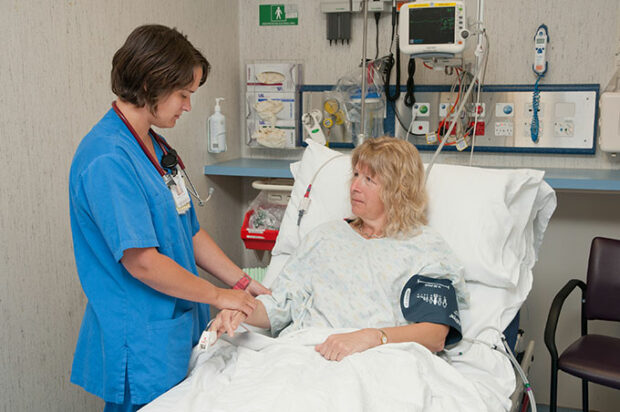
In 2012, patient revenues at Excelsior Springs Hospital came to a little more than $50 million.
That’s but a rounding error when compared with overall revenues of $3.53 billion at the region’s 800-pound health-care gorilla, the University of Kansas Hospital.
And yet, those two institutions are not so very far apart in one important category: The commitment to quality patient care that distinguishes this marketplace as a center of health-care excellence. From top-notch administrators to skilled professional staffers, from support staff to nursing specialists and volunteers, the hospitals in this region are staffed with people fiercely devoted to quality patient outcomes.
Why? In part, because those hospitals also are fiercely competitive. As a marketplace, Kansas City has a disproportionate share of hospital beds. If you’re going to fill them—or as many of them as can be filled—you’d best be good at what you do.
We cite the above example of Excelsior Springs Hospital and KU’s sprawling health-care complex because each is represented by Ingram’s Heroes in Healthcare for 2014. Truth be told, the top five hospitals and health-care systems in the metro area, with nearly 30,000 employees combined, could easily fill out our annual roster of admin-istrators, nurses, health-care professionals, support staff, volunteers and lifetime-service honorees.
But each year, we comb the health-care landscape—including allied-health professionals in private practice, non-profit organizations and settings outside hospitals—to show just how broad and deep the commitment to patient care really is in this region.
We’re confident that the stories of this year’s Heroes in Healthcare will serve as powerful reminders of the blessings we all enjoy as a result of that commitment.
ADMINISTRATION
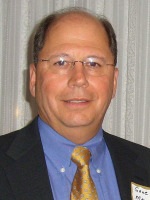 Gene Meyer | Lawrence Memorial Hospital
Gene Meyer | Lawrence Memorial Hospital
Effective hospital administration starts with delivering quality care in the short term. To succeed in the long term, you’d better know your market. As Gene Meyer, CEO of Lawrence Memorial Hospital, knows his. “Here are a couple of statistics that are mind-boggling,” he says. “Thirty-seven percent of those who live in Lawrence work outside, and 47 percent of the professionals who live in Lawrence work outside of town. The number of people who get up and drive to Kansas City or Topeka is a bit of a downer; we need more job growth. But from a health-care standpoint, the challenge for us is continuing to provide accessibility for commuters who aren’t here, and to educate and create an environment of service so people don’t feel like they have to go to Kansas City or Topeka for health care.”
Key to that, Meyer says, has been establishment of high-performing programs, particularly in oncology and cardiology. “Those have led the way to saying we’re not a Band-aid station, but a first-class community hospital.”
Meyer, a Wisconsin native who went to Oak Park High School and Rockhurst University, came to LMH 17 years ago after a long stretch at Saint Luke’s Health System in Kansas City, where he had roles in the expansion from a single site on the Country Club Plaza to a series of hospitals ringing the metro area. “I played different roles establishing all three, but they have become significant strategic organizations for Saint Luke’s Health System” he says.
His immediate challenge at LMH, he said, was a cultural one; annual turnover topped 35 percent. “Last year, it was 12 percent,” he says. “Now, that wasn’t me—I couldn’t have done that on my own. But fixing that set the foundation for us to move forward with other programs and services we were able to develop.”
The real credit for all that, he insists, goes to the hands-on caregivers. “We’re not the real heroes, we do the business of health care and facilitate the opportunities for the real heroes—the physicians, nursing staff and other care-givers.”
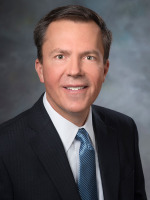 Chuck Robb | Saint Luke’s Health System
Chuck Robb | Saint Luke’s Health System
When Chuck Robb left Ernst & Young to become chief financial officer at Saint Luke’s Hospital in 1991, it was something of a homecoming: Robb was born there. Today, he’s the senior vice president for finance and administration and chief financial officer for Saint Luke’s Health System, which owns the mother ship and nine other regional hospitals, and stands as one of the region’s 10 largest private companies.
A natural interest in the field led him to UMKC and what is now the Bloch School of Management, where he earned an accounting degree. He set his sights on becoming a certified public accountant and signed on with E&Y, work that would prepare him for a more challenging financial role in health care, not just in the 1990s, but even today. “I think this experience and variety prepared me for the rapid pace of change in health care these past several years,” Robb says. That pace of change has yielded no shortage of challenges for a health-care system with $4 billion in annual revenues. “One is working in the current economic system of
fee for service,” Robb says, a challenge complicated by questions about how outcomes will be measured, and by a demographic swell of older Americans, who traditionally account for greater shares of health-care costs. “Another challenge,” Robb said, “is that the evolving health-care reimbursement model is based on meaningful Medicaid reform, which has not come to our two states yet.”
It’s hard, he says, to measure the impact of his own contributions—or any administrator’s—to his employer. “Accomplishments are almost always based on team efforts by a number of caregivers,” he says. “Those of us not in direct patient care contribute to supporting that care.”
And that’s where he finds the rewards, he says, in “the opportunity to help support the care of people.” “Taking care of people is really what we do, and those of us in finance get the chance
to support that,” Robb says.
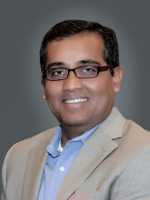 Dahnunjaya Lakkireddy | University of Kansas Hospital
Dahnunjaya Lakkireddy | University of Kansas Hospital
Meet Dahnunjaya Lakkireddy, Revolutionary. “In the last two decades, the field of electrophysiology has seen a revolution that has changed our understanding, abilities and approach to the management of arrhythmia, and I wish to be a part of this revolution,” says the cardiologist at the University of Kansas Hospital. But he’s not just part of the uprising, he’s a ringleader. Though just 13 years out of medical school in his native Hyderabad, India, Lakkireddy is the director of the Center for Excellence in AF and Complex Arrhythmias at the hospital, and leads two medical education symposia every year. He’s considered an expert in cutting-edge technologies for treating heart maladies. “The heart is the epicenter of the human body,” Lakkireddy says. “It is simple in its design and functionality, yet plays a very critical role in the sustenance of life.” From the first time he laid hands on a patient for defibrillation in an emergency room setting, Lakkireddy has been fascinated by life-and-death consequences of that work.
The first physician in his family, Lakkireddy says he knew from middle school what he wanted to become. “There were no doctors in my whole family,” he says. “I was particularly fascinated by our family doctor who took care of my entire extended family for three generations” and demonstrated respect, optimism and compassion.
Technology has dramatically changed every facet of medical care, but perhaps nowhere more than cardiology. “Embracing new techniques and adapting disruptive technology is critical to advancing the quality and efficiency of patient care,” Lakkireddy says,
“but at the end of the day, the patient comes first. Our ability to provide world-class care, having access to the latest tools, made us the institution we are,” and one ranked in the top 25 cardiology programs nationally by U.S. News and World Report. “This profession has made me a better individual on a personal level—to be humble, open, patient, empathetic and resilient,” Lakkireddy says.
PROFESSIONAL SERVICES
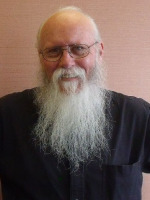 Kevin Dennis | Southwest Boulevard Family Health Care Services
Kevin Dennis | Southwest Boulevard Family Health Care Services
Forty years ago, Kevin Dennis was working on the grounds-keeping crew at the University of Kansas. That’s where he first met
Sharon Lee, who would go on to become a physician and found the Southwest Boulevard Family Health Care Services. She brought Dennis on board to run the business side of an office with perhaps the most unusual compensation structure you’ll find in health-care today. As chief administrative officer for the clinic, Dennis makes the same wage everyone else employed there does—$14 an hour, which probably isn’t much more than he’d be making if he were still cutting grass in Lawrence today. “She likes to call me a co-founder of the clinic, and I guess that’s true,” Dennis says of Lee. “But I wouldn’t have founded anything by myself, and she would have done it without me. I do what I can to support her.”
Which, as it turns out, is a lot. Since the clinic’s inception as a tiny office with three employees
in 1989, Dennis has been the operations and administration complement to Lee’s medical services.
From that tiny seedling has grown a comprehensive health-care clinic with 58 employees. It found a niche early by treating patients who were HIV positive; many physicians in that era wouldn’t take those cases before more was known about the disease, Dennis said. Because anti-retroviral drugs hadn’t been discovered, AIDS was often a fatal diagnosis, but indicative of the clinic’s comprehensive approach to care, the leadership created a program to line up adoptive parents for children likely to be orphaned by the disease, and introduced them before that loss of that parent, helping ease the transition. Dennis has also assisted in the addition of a dental clinic, health-education programming, a fitness center—even a legal-aid clinic. “We’re trying to be a one-stop shop for total health,” he says. Challenging work, but rewarding, as well.
“Going home feeling like you’re doing something good and not taking advantage of anybody,” is chief among those, Dennis says.
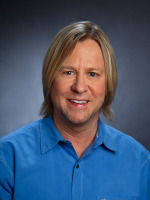 Todd Hill | Northland Psychiatric Specialists
Todd Hill | Northland Psychiatric Specialists
Three months into his psychiatric residency at the Veterans Administration Medical Center, Todd Hill had an epiphany. It was delivered to him at the tip of the 9-inch butcher knife that a patient thrust into his jaw. “That was kind of a defining moment,” says Hill. “I could have chosen to do something else, and I guess a lot of people would have. By the grace of God, it was not in the neck, but I thought, do you continue to do what you really love, or sign on to something else?” The answer to that question came the next day when Hill, bandaged, showed up for his assigned rounds.
The gravitational pull back to seeing patients was the same one that brought him to medicine in the first place: The values of small-town health-care delivery he’d learned from his father, who owned and operat-ed a clinic in Wellington, Kan. “I grew up immersed in a health-care lifestyle,” Hill says. “I worked as a kid, as a janitor at the clinic, and knew nothing but him being a D.O. and having a small-town practice.”
The younger Hill was going to break that mold by majoring in music at KU—he still plays guitar at local venues—but realized a musical career was a tough way to make a living. So it was back to his roots, entry into medical school and pursuing, Hill says, “what I knew and grew up with.”
Today, he plies that trade at a remarkable number of venues, including the practice he co-founded, Northland Psychiatric Services, along with North Kansas City and Liberty hospitals; at his alma mater, Kansas City University of Medicine and Biosciences, where he chairs the department of psychiatry; and other clinical and consultive settings.
“If you love what you do, I don’t think it’s as much of a challenge,” Hill says. “I try to approach psychiatry from a common-sense standpoint: I’m a big believer in talking to patients, sending them to a therapist if they need to go, but very conservative when it comes to medicating them.” Underlying that, he says, are the values and work ethic of a small-town practitioner. “I always said I’d never work as hard as my dad,” Hill says, “but here I am doing the same thing!”
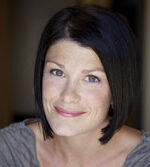 Julie Buttell | Elite Sports Medicine and Physical Therapy
Julie Buttell | Elite Sports Medicine and Physical Therapy
Tears and laughter. Julie Buttell remembers seeing and hear-ing both at the renowned St. Jude Children’s Research Hospital. Given its reputation for treating some of the most challenging
pediatric cancer cases, the tears were understandable. The laughter? It seemed a constant in the physical therapy department, where Buttell first started volunteering as a sixth-grader. “So many kids were sick and there were lots of tears walking around the hospital, but in that department there was always laughing, joy and a general sense of hope,” says Buttell, a physical therapist at Elite Sports Medicine and Physical Therapy. Watching therapists teach children that had an amputation learn to walk again seemed so rewarding.”
She left her native Memphis for Rockhurst University and both bachelor’s and master’s degrees in physical therapy, then worked in five states around the country, in differing therapeutic disciplines. Through time and experience, she’s developed her own perspective on treatment. “No one thing works for every client, so as many tools and experiences you have to build on, the better,” she says. “My contribution to patient rehab stems from combining techni-ques from all of my backgrounds to treat my clients more holistically.”
One thing that makes her calling rewarding , she says, is that while most other health-care practitioners are time-starved, “we have time to listen, absorb, and act. The average time an M.D. gets to spend with a patient is 7 minutes; we get 60 minutes for an evaluation and 45 for each visit.”
People, she says, are blessed in many different ways in life. “I am blessed to be right where I am supposed to be, doing exactly what it is I am supposed to be doing. The profession has given me peace. I wake up most days and know I get to put my hands on another person and help them to feel better and move better so they can be exactly where they want to be, doing what they want to be doing.”
AUXILIARY STAFF
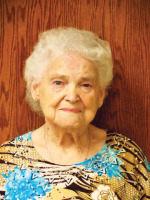 Lizzie Clevenger | Excelsior Springs Hospital
Lizzie Clevenger | Excelsior Springs Hospital
As Lizzie Clevenger might tell you, the trick with any job is getting past the first 50 years. After that, it’s smooth sailing. Since setting foot in the old Excelsior Springs Hospital on Easter Sunday 1962, Clevenger has been a fixture in the dietary unit—hospitalese for the kitchen.
When Clevenger was honored for her half-century of service in 2012, CEO Sally Nance said that, according to local legend, Lizzie had stood on
the spot where the new hospital would be built in 1977 and announced where she wanted the kitchen to go in.
So what’s kept her in that kitchen all these years? “I always worked in dietary, so it is what I knew,” Clevenger says. “I like the work and I like the people; this is my home away from home.” Her shift starts early; she’s up at 4 a.m. so she can be in the kitchen in time to get breakfast going. And when you’re cooking 90 meals twice a day, speed and efficiency matter. “If a patient can’t eat and has to have a special meal, I also have to make that, and that takes a while,” she says. But the routine is set: “I pour all the water to start out with, then make lemonade, and work on the tray line,” getting meals prepped for in-room delivery.
The best part of her job, she says, is making the cakes for patients’ desserts, with chocolate her signature recipe. There is, she says, no flip side to that question: “There is nothing hard about my job, but I’m just getting slower and slower.”
The most rewarding aspects of those 52 years, Clevenger says, “are all the close friendships I’ve made over the years.”
Born and raised in Liberty, Clevenger moved to Excelsior Springs in 1939. She has a son and a daughter, four grandchildren and 12 great-grandchildren, and when they show up at her house, you can bet she’s involved in meal preparation.
So how long will she be wielding a spatula at the hospital?
“’Til they get rid of me, I guess,” she says.
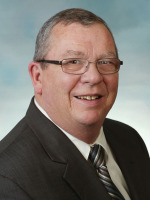 Richard Zaroban | Olathe Medical Center
Richard Zaroban | Olathe Medical Center
It wasn’t health care specifically that called Richard Zaroban to Olathe Hospital almost 40 years ago, but it was a certain kind of pediatric issue: “I had just finished my college degree and had a 2-month old baby to support,” Zaroban recalls. “I needed a better job than I had at the time,” and he found one as maintenance mechanic at what is now Olathe Medical Center.
Today, he’s director of building services for the sprawling, 280-acre medical complex, responsible for the physical plant of the 300-bed hospital, its medical offices and what he calls “my patients” and their visitors.
The glue that has held him there, for nearly four decades, he says, “was the culture of the organization. Olathe Medical Center has never been satisfied with the status quo. The organization has always sought to expand and bring the best health care to its community and it gave me the opportunity to grow with it.”
The regulations that prompt gnashing of teeth in physician and administrative offices are just as prominent in what Zaroban does in a support role: “The biggest challenges,” he says, “would be ever-increasing responsibilities within the organization and compliance with codes and regulations from various regulatory bodies.”
But he relishes the challenges, as well as a position where no two days are the same, he says. “The opportunities I have had to be involved in construction are a great source of personal satisfaction. I enjoy showing off the facility and saying, ‘I had a hand in building that.’”
The challenges, he says, come when he must “step out of my comfort zone and try new and different things.” But when he masters them, he says, he feels “a sense of personal pride and the satisfaction of knowing that I was able to have a small part
in providing quality health care to our customers.”
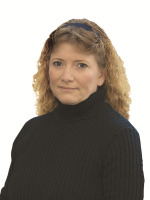 Becky Thomas Children’s Mercy Hospitals & Clinics
Becky Thomas Children’s Mercy Hospitals & Clinics
She was determined to work with children, but wasn’t sure whether that would be as a nurse, teacher or social worker. When Becky Thomas graduated from high school and finished some business-school courses, the stars aligned with a cashier’s position at Children’s Mercy Hospital. She jumped at the chance—and had a moment of self-realization: “I applied thinking it would get me one step closer to working with kids,” she said, but the orientation tour ended any dream of pediatric nursing. “If the sight of the kids hooked up to machines and tubes made me cry and my heart ache, how could I be an effective nurse?” she says. “So, I decided right then and there to utilize the skills that I had just obtained and stick with something that I could handle—numbers.” She’s been doing that ever since, moving quickly from the cashier position to the accounts receivable department, then into a payroll position. She’s now payroll manager for the hospital network, which means cutting pay checks to 6,500 employees every two weeks. “I would have to say the biggest challenges are meeting the numerous deadlines and staying compliant with the ever-changing laws, rules, and regulations that surround pay practices,” Thomas says. “But, I am fortunate: I have a very talented team; they are the ones who help to ensure we overcome these challenges.” And when they do, there’s a measure of satisfaction that comes from making sure no employee time is lost with inquiries about payroll discrepancies.
By ensuring their pay is correct, she says, “they can focus on our patients and their families.”
If those in the hands-on care positions can do that, Thomas is living through their experience. “Although I do not provide direct patient care, I am proud to be a very small part of such a wonderful organization that truly focuses on the children,” Thomas says. That focus, she says, “includes support for their social well-being and on-going research. … So I guess the profession has given me the
opportunity to be a part of a wonderful, talented, and professional organization.”
NURSING
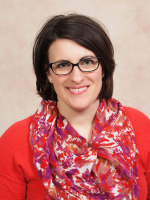 Meagan Bieker | University of Kansas Hospital
Meagan Bieker | University of Kansas Hospital
For more than a decade, Meagan Bieker concedes, nursing had her on the move, with hospital stops in her hometown Hays, in Manhattan, Kan., and in Kansas City. “I jumped around a lot,” she says. Then she landed at the University of Kansas Hospital, and there, she hopes, she’ll stay, working in the surgical rooms and interacting with patients who, in their own ways, are also on the move.
“After surgery, the patient goes to recovery and we don’t really expect to ever see them again. You never know the ending,”
Bieker says. “You assume they get well and go home and return to their lives with their families.” At first,
she said, that construct bothered her. “But then I found a new way to look at it: When a person comes in
for surgery it is a very scary event,” Bieker says, entailing no small measure of surrendering one’s fate—
life, even—to another. “They are allowing complete strangers to take over and hope for the best outcome.”
And that’s where she feels she makes a real difference in their lives: “I always make sure to explain that we will be with them the entire time. Literally watching every little thing about them. I do my very best to make them as comfortable as possible before going into this foreign place.” And she can tell when she’s done her job correctly, she said, when patients can relax and smile. “It is a special role behind the scenes,” Bieker says.
She earned her nursing certification at North Central Kansas Technical College’s branch in Hays, and went to work on the surgical floor at Hays Medical Center in 2001, Mercy Hospital in Manhattan for a couple of years, then to Saint Luke’s in 2005. After marriage and a short stint in Omaha, she landed the position at KU Hospital in 2007.
“It was big hospital with a Level 1 trauma center, and it was very exciting,” Bieker says, citing the surgery room work with KU’s transplant programs. “It really allowed me to develop that side of my nursing career.”
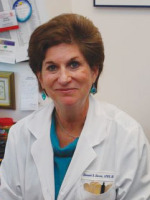 Hannah Harris | Professional Care Pediatrics
Hannah Harris | Professional Care Pediatrics
There’s no getting around it: If you work in pediatrics, the clock is running on your relationship with patients. They do grow up. But, as Hannah Harris has discovered, that clock can be reset, as she’s seen in nearly 25 years with Professional Care Pediatrics. “I’ve started seeing lots of second-generation patients, and that is fun and rewarding,” says Harris, a nurse practitioner for the private practice in Overland Park. “It’s nice because most of the time, patients and their families really appreciate what I do and the time I spend with them.”
Harris, a Duke-educated native of Baltimore, came to Kansas City in 1980 after getting married, and worked at Children’s Mercy Hospital before moving to the clinic. There, she found exactly the fit she was looking for. “It’s rewarding to work with a nervous, first-time parent of a newborn and watch them grow into a comfortable role as a parent, while at the same time providing consistent, quality health care for their baby,” she says. “Watching families grow is also very rewarding.”
Her interest in health-care started early, and at home. “My dad was a physician and I used to go to work with him growing up—always loved how he interacted with patients,” Harris says. “I feel like I have always had nurturing instincts and have always enjoyed the
sciences, especially once in college, and thought nursing was a good way to combine the two.”
Her health-care world view is shaped, in part, by the first nursing job she ever had, in pediatric oncology and the pediatric ICU at Johns Hopkins in Baltimore. “I was amazed by the courage and strength of my young patients with cancer and their families,” she says. “They were facing incredible life-threatening challenges at a time when bone-marrow transplants were still in the experimental stages. They were hospitalized for months and I got to know them very well. I still remember their names, faces and their incredible courage. At times, I still think about them—I learned so much from them about facing adversity, caring and compassion.”
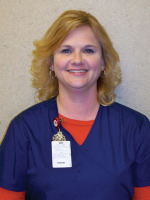 Melinda Lacy | Cass Regional Medical Center
Melinda Lacy | Cass Regional Medical Center
Melinda Lacy married young, but true: She and her high school sweetheart are coming up on a silver anniversary this fall. “We decided to put my husband through college first,” says Lacy, a nurse with Cass Regional Medical Center. But after she headed to college, parenthood called. “Our oldest daughter’s birth was both miraculous and scary!” Lacy recalls. “She was 2 pounds, 6 ounces and almost
11 weeks early. After my experiences with her and the NICU nurses, I knew more than ever: Nursing was what I was wanted to do!”
That’s how she ended up in nursing, following an interest sparked as a candy-striper in her native Wichita. Before she finished her nursing degree at KU, she worked as a phlebotomist and patient-care assistant; now, she’s anticipating her family nurse practitioner license in August.
“From as early as I can remember, I wanted to be a doctor or a nurse,” Lacy says. “The medical field fascinated me and I loved the idea that I could obtain the knowledge needed to care for other people when they were sick or hurt.”
Nursing, she says, has allowed her to care for everything from the tiniest of babies to centenarians. “I have been at the bedside when a mother gave birth to triplets and at the bedside of many dying patients,” she says. “I consider it a great privilege to be a part of these special moments in a patient’s life. I have been so blessed to have had many different opportunities as a nurse, including pediatric intensive care, infant/delivery nurse, an emergency room and ICU nurse and a nurse case manager. Each of the positions had challenges and joys and have ultimately made me so proud to be a nurse.”
The moments that stand out for her, Lacy says, “are the ones where a personal connection was made. It is not always easy to keep a smile on your face when patients are sad or grumpy or just downright mad. I come from a family with a very strong work ethic and I often remind myself that my most difficult of days as a nurse are nothing compared with some of the easiest days my patients have to endure. I want each of my patients and families to feel like I am treating them the same way I would treat my own family.”
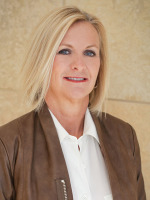 Mary Nelson | Cerner/First Hand Foundation
Mary Nelson | Cerner/First Hand Foundation
“It’s always hard to hear a parent in tears,” says Mary Nelson,
but when the tears flow from gratitude, not loss, they evoke a different response. “I got a call from a father with two children, both of whom
had cystic fibrosis,” says Nelson, a case manager for Cerner’s First Hand Foundation, which provided a small travel stipend so the man’s children could be seen at the Cystic Fibrosis Clinic. “He was in tears stating how much he appreciated the assistance and how it meant the world to him to help his children get the care they needed. That was something for me, because I was thinking that we all spend $200 on so many minor things in life. But this father said he just wanted to give his children a chance to be well, to live and to thrive and he just needed a little help.”
Finding solutions is key to her work with the foundation, where she started in 2002 and became a case manager two years later. Before that, the Washburn University nursing graduate had worked mainly in surgery at Providence Medical Center, as a substitute school nurse, an immunization and flu shot clinic nurse and a diabetic clinic nurse.
“I always wanted to be a nurse or doctor when I was younger to make a difference in peoples lives and care for them in times of need,” Nelson says. “I enjoy being challenged so nursing provides diversity and learning opportunities that truly impact people’s lives for the better. A nurse can work in different kinds of establishments such as hospitals, schools, home care facilities, foundations with flexible schedules.”
The best part about her job? “I can help make a difference for children’s health care that affects the child, family and community. I enjoy building relationships with families, health-care professionals and providers of care to the children. The hardest part is hearing the challenges that children and their families face while trying to meet health-care needs. These families just need a little help. Some of the children have serious, chronic or multiple chronic conditions and First Hand funding is the last hope.”
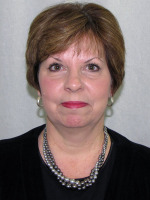 Jan Watkins | Liberty Hospital
Jan Watkins | Liberty Hospital
So much of what our trillion-dollar health care system revolves around is restoration of health. The often-unspoken and darker side entails treatments where the outcome is … eternal. When those cases arise, Jan Watkins is there to fill a need. “For me, the most touching times are when families experience a loss of their loved one and during this period of grief, they reach out to the staff to include myself, by writing a note of thanks, calling, or come back to the cancer center for a hug,” says Watkins, director of oncology services for Liberty Hospital. “You know you have made a difference for them. As I have become more seasoned, I have learned we don’t have the power to change the final outcome, but we certainly have the responsibility and ability to make their journey the best that it can be.”
Since she started at the hospital 29 years ago, this native of Danbury, Conn., has moved from staff nurse to nurse manager of the surgical/oncology unit, then had the added task of developing an out-patient oncology center. She became oncology coordinator, acting in the role of a nurse navigator before nurse navigator was even a recognized specialty, and her team successfully achieved the hospital’s first cancer-program accreditation in 2003.
As the oldest of five children, Watkins says, “caretaking” was a natural tendency, and a family friend who was a nurse served as an early role model. “From the time I was a little girl, I always wanted to be a nurse,” she says. “It is truly a calling for me.”
The payoff for answering that calling comes when a cancer patient emerges from treatment healthy and happy.
“It’s rewarding to know you played a part in their recovery,” Watkins said. “Working in oncology has shaped my life in such a positive manner. The courage and strength I witness every day in our patients and families makes me appreciate life and all it holds.”
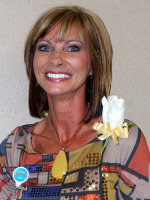 Debbie White | Heartland Regional Medical Center
Debbie White | Heartland Regional Medical Center
“I think I was destined to be a nurse,” Debbie White says. “Especially a pediatric nurse. I absolutely love kids and feel very protective of them.” A 24-year veteran at Heartland Regional Medical Center,
White says the allure of working with children in part comes from their forgiving, loving nature. “Every time I tried to remove myself from the pediatric world, something would call me back or happen and I would veer back to pediatrics,” she says. “I guess I’ve never done anything but pediatrics.”
And at a high level, too: She won the Heartland/Mosaic Life Care 2013 Nurse Excellence Award, the organization’s highest honor. And her love of children extends to her off-hours, serving on the boards for the Youth Alliance, Safe Haven, and Northwest Missouri Coalition for Child Abuse and Neglect. She also seeks out opportunities to speak about safe infant-sleep techniques, with speaking engagements at churches and women’s organizations.
Education has been a core value throughout White’s career, and not just the continuing education required in her field. She received degrees in nursing and social work from Missouri Western State University in St. Joseph, then earned a master’s in social work and nurse educator from the University of Missouri. Even now, she’s enrolled in Graceland University’s family nurse practitioner program,
which will allow her to continue nursing—and her connection with children—at another level.
“Even when I worked in home health, my love was pediatrics,” White says. “I truly believe that my destiny is to work with kids. I LOVE kids.
I’ve been placed in this world to protect kids and I will continue until I die—then I’ll probably haunt them,” she chuckles. She and her husband—“the man of my dreams for the past 29 years”—raised two children, and both are following a health-care path. “Our recently married daughter is in her third year of medical school and is in the Air Force, and our son is pursuing his dreams in chiropractic school,” White said.
VOLUNTEERS
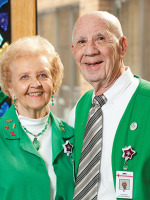 Bill and Margie Bopp | Providence Medical Center
Bill and Margie Bopp | Providence Medical Center
Like running backs breaking into the open field, Bill and Margie Bopp dashed into retirement 25 years ago and saw nothing but opportunities ahead. It was time, they decided, to start giving back a little more, and the former Bethany Medical Center was a good fit for close to a decade.
But just after Bethany closed in 2001, Margie suffered a heart attack and was admitted to Providence Medical Center. After she’d gone through the cardiac rehab program there, the word was out at Providence: “They knew I volunteered at Bethany,” Margie says, “so they asked me if I’d like to volunteer in cardiac rehab, so I’ve been there since 2001.”
And Bill shows up with her, two days a week for what are generally four-hour morning shifts. Combined, they’ve logged more than 12,000 hours at Providence, where Margie heads off to cardiac rehab, while her husband mans the information desk in the adjacent medical office building. “I tell people where to go,” Bill muses.
But he does more than that, Margie says: “He’s done lots of really good things helping people with problems.” Over Bill’s protest—“Now, don’t go into that,” he says—Margie tells the story of a patient with a broken walker. “He went out to a shop where he bought two walkers and put them together for her,” Margie says, unaware that Bill was ill at ease with the exposure of his Good Samaritanism. “Then we bought a wheelchair, a real nice wheelchair when somebody needed it, so he gave it to them.”
“Don’t tell them that,” Bill says with a faux frown. “Those are secrets.”
Over in the cardiac rehab side, Margie says “I just do anything they want me to. I keep up the kitchen, I keep the cards all filed and I do special projects,” often acting as a mentor or cheerleader for those in the same position she once found herself in.
“When people first start in cardiac rehab, they really don’t want to be there,” she says. “They don’t feel good, they don’t want to come, but within a month, you can just see a terrific difference in them.”
Bill, a long-time employee of the Kansas City Kansan, also served as business manager for the McAnany, Van Cleave & Phillips law firm, where Margie also worked after raising their children.
With Bill now at 87 and Margie 84, how long will they keep at going? “I was going to stay until 90, but I don’t know if I’ll make it or not,” Bill says. But by volunteering, he says, “I really think your life is better. You meet a lot of people. If you sit at home every day … I think this keeps us alive.”
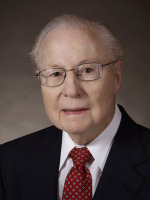 Mac McEnroe | Shawnee Mission Medical Center
Mac McEnroe | Shawnee Mission Medical Center
When it comes to finding the volunteers so highly prized by hospitals, it doesn’t hurt to have connections. That’s how Shawnee Mission Medical Center and Mac McEnroe got together in 1987.
“I had a friend who volunteered there and enjoyed it, and I was kind of looking for something to do anyway,” McEnroe recalls from his early days of retirement. “I had volunteered at some other places, providing transportation to those who didn’t have any, and things like that. But my friend enjoyed it, so I thought I’d take a crack at it.”
That turned out to be quite a crack: 26 years later, as he started closing in on 8,000 hours of volunteer service, the hospital recognized him as its Volunteer of the Year for 2013. The award came just in time for the 95-year-old McEnroe, who worked his last shift on the hospital’s admitting desk in the fall.
In making its award, the hospital cited McEnroe’s integrity and warm welcoming of patients.
“I really liked the company of other volunteers,” he says, “as well as some of the hospital employees. I considered them to all be very nice people, and I just plain enjoyed it, so I stuck with it a while.”
Before diving into volunteer work, McEnroe’s career had taken him to the Santa Fe Railway, where he worked on office machines. Then he signed on with IBM for more than 25 years. At the railroad, he said, “I became aware of the IBM people who came to repair machinery and keep it running, and I thought they were living a little better than I was, so I applied for a job there and they said, ‘Fine.’”
He and his wife, Maxine, raised two children and have two grandchildren, and these days, the Wyoming native is catching up on his rest, having recently relocated to Lawrence.
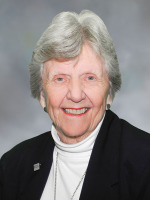 Mardel Lillard | Saint Luke’s Hospital
Mardel Lillard | Saint Luke’s Hospital
More than 30 years ago, Mardel Lillard checked into Saint Luke’s Hospital as a patient. In some ways, she never has left. The volunteer program director at that time was a friend of Lillard’s, and she seized on the opportunity to nab a fresh recruit. More than 15,000 volunteer hours later, Lillard is as much a fixture in Midtown Kansas City as the hospital itself.
As both a member of the hospital’s auxiliary and a volunteer, Lillard has had numerous assignments throughout the building, including the reception desk in the surgical wing, the information desk in the neurosurgery ward, where she’d once been a patient, delivering flowers to patients throughout the hospital, and serving as an ambassador-at-large, greeting visitors and directing them wherever they need to go. She has also logged time in the surgery waiting room, where she would relay information and updates about patients from the surgical staff to anxious relatives.
Hospital officials say her positive and pleasant attitude and supporting family have given her a healing strength, making her a shining role model for all volunteers. That’s one reason her peers nominated her for special recognition when she was named Volunteer of the Year in 2012.
“A kind word, a pleasant smile and a cup of coffee can many times relieve the anxiety of a friend or family member whose loved one is in surgery,” her nomination read. “Mardel serves the surgery waiting room in a dignified manner, but with all the compassion needed.”
It was an impressive bit of praise for a volunteer program that records upwards of 56,000 donated hours of service each year, which the hospital says is the equivalent of 27 full-time employees and more than $2.1 million in payroll.
And it turns out, Lillard has an eye for recruiting other volunteer talent, as well. When her husband, Dave, retired from Black & Veatch, he joined her for a weekly shift at the information desk for the Neuroscience Institute at the hospital.
LIFETIME SERVICE
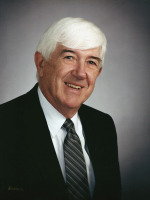 ROBERT O’NEIL Cotton-O’Neil Clinic
ROBERT O’NEIL Cotton-O’Neil Clinic
“When I first went into practice” in 1951, Robert O’Neil recalls, “I immediately was swamped with patients, and I thought, ‘Gee, they must think I’m pretty good.’ But that wasn’t the deal at all—there was just a shortage of doctors.”
Don’t let the self-deprecation fool you: O’Neil was pretty good. And not just as a doctor. He had the vision to team up with the late Robert Cotton in 1956, laying the groundwork for what would become Topeka’s premier medical practice, the Cotton-O’Neil Clinic.
The two worked side by side for 12 years before bringing another physician on board, setting the stage for growth that would continue apace for nearly 30 more years. First-rate medical care, O’Neil says, starts with the best doctors, nurses and support staff.
“I’ve always been driven to be around the very best people,” says O’Neil, 93. “That’s how I got started with that group of docs. Cotton was at the top of his class, and the others we hired, anybody would beg to get them. Outstanding physicians, and good guys.”
Growth became the norm as the clinic evolved into Topeka’s largest health-care practice, leading up the merger with Stormont-Vail Regional Medical Center, in 1995. That created Stormont-Vail HealthCare. The clinic’s resounding success, he says, was “like a lot of things, the result of some planning and a lot of luck. … I was pretty good at picking people, I picked some administrators who did all of that so I didn’t have to worry about it.”
That allowed O’Neil to keep his hand in patient care. “The surprise to me was how much satisfaction there was in getting to know people and just listen to them,” O’Neil says. “They might come in with a heart problem, but always get off on the troubles they were having with wife or kids, or some other emotional problem. Somehow, I didn’t mind listening to all that.”
It’s a skill doctors need to master to this day, he says. “You have to get to know the people and understand them beyond their physical problems because of the ordinary things we all face every day.”
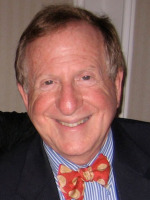 ANDREW KAUFMAN | Midwest Neurosurgery
ANDREW KAUFMAN | Midwest Neurosurgery
Before there were CAT scans or magnetic resonance imaging, before radiosurgery, spinal instrumentation or intraoperative ultrasound, Andrew Kaufman says, there was one tool that no physician worth his license could do without: “Listening to
the patient and properly applying the relevant technology.” Those skills, he says, “remain key to providing optimal care.”
For 40 years, Kaufman treated thousands of patients as a brain surgeon before he retired from Midwest Neurosurgery Associates in 2011. Those skills are not going to waste in retirement; Kaufman travels to Ethiopia each year for an extended stay, helping the sick in one of the world’s poorest nations. “My work in Ethiopia, with much less technological capability, constantly reminds me that skill and judgment are at least as important as technology in restoring good health.”
The call to medicine was one that rang early in his life. “Even as a child,” he recalls, “I marveled at the complexity and wonder of the body and its functioning.” A general surgeon who lived nearby when Kaufman was young offered further inspiration with his demeanor, caring for people and skills. “As long as I can remember,” Kaufman says, “I derived great pleasure from helping people and fixing anything; why not the human body?”
But the human body is a complex machine, and finding his calling there required some investigation. “I have always accepted and embraced challenge,” he said. “In medical school, I went through a methodical process of investigating every medical and surgical specialty. I liked the mystery and complexity of medical diagnosis, but even more the capabilities of surgeons to heal.”
Neurosurgery, he said, combined complexity in diagnosis with the opportunity to heal by surgery. “The greater the challenge, the more attractive it is to me,” Kaufman said. “Finally, there was the ultimate gratification of restoring to health those with often severe disability and even threat to life.”
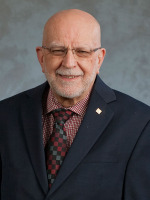 DOUG RUSHING | Kansas City University of Medicine and Biosciences
DOUG RUSHING | Kansas City University of Medicine and Biosciences
He’s never laid hands on a patient, but thousands of physicians—and uncountable thousands of people they treated—have extended Doug Rushing’s reach across the nation and the world of medicine. Nearly 43 years after he first set foot on the campus of Kansas City University of Medicine and Biosciences, Rushing is winding down a career as dean of the college of biosciences. By his count, between 5,000 and 6,000 practicing physicians were introduced to biochemistry on his watch. “One of the reasons I remained through thick and thin was that I liked working with the faculty here, who keep student education first and foremost,” he says. “You might not be a physician yourself, but if you train someone to be a truly high-quality physician, and know there’s a need for them, particularly in primary care, there’s great satisfaction in knowing that in some small way, you’re contributing to the health and well-being of thousands of people who are patients.”
That aspect took on personal overtones when one of his grandchildren was born without a pulmonary artery. Now a thriving
5-year-old who has undergone three open-heart surgeries at Children’s Mercy Hospital, the boy is a living reminder that what Rushing has done for more than four decades has real life-and-death consequences. Among his most satisfying contributions, he says, have been the cases where he’s been able to make a difference in a student’s life, “seeing a student who would not have gotten in to medical school otherwise do so and not just succeed, but excel,” Rushing says. During his time there, he says, KCUMB has been like three different institutions. “When I came here in ’72, they were opening a hospital, which closed in ’86 or ’87. That was Phase I. Phase II was the low point, about ’87–’92, when they had a lot of financial problems and went from 1,200 employees to about 130 or so. This last third, we’re in the best shape we’ve ever been in as an institution, financially and academically.”